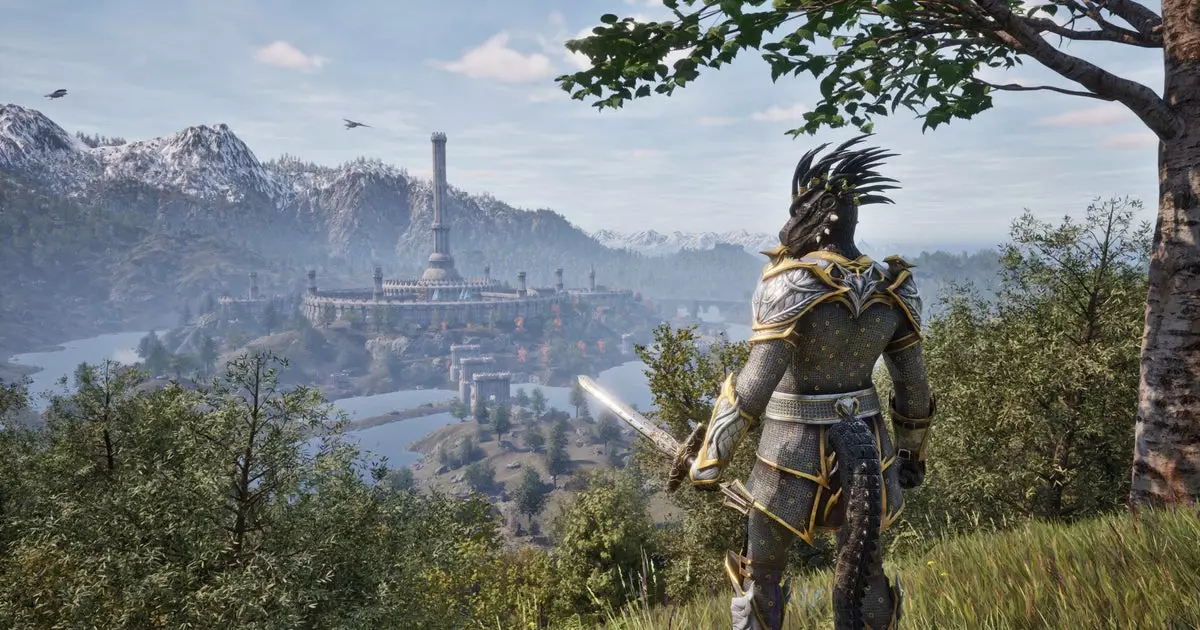The world of modding has always been a kaleidoscope of creativity, imagination, and unabashed fandom. With the recent surprise launch of The Elder Scrolls IV: Oblivion Remastered, Bethesda has inadvertently reignited this vibrant scene, much to the delight of modding enthusiasts. Despite the lack of official mod support—something that might deter less dedicated fans—those who revel in bending the rules have jumped in with both feet. Within hours of the remaster’s release, over 90 mods have been shared on various platforms, indicating an insatiable appetite for customizing this iconic RPG.
What’s especially remarkable is the resurgence of older mods that, against all odds, have found a place in this remaster. A recent discovery by an adventurous player showcased a 2008 mod that initially added end-game armor to the player’s prison cell. It appears that with a little tinkering—specifically, a manual edit to the “plugins.txt” file—this relic has become unexpectedly functional in the new environment. Such discoveries hint at a treasure trove of classic mods lying dormant, eagerly waiting for fans to revive them.
The Intricacies of Compatibility
However, it’s not all smooth sailing. Modding, particularly in ever-evolving digital landscapes, requires a nuanced understanding of compatibility and functionality. While certain types of mods—especially those that involve simple model swaps—are proving to be viable, the intricacies of award-winning graphics engines like Unreal bring a complicating factor into play. Unique file formatting (such as paks, which are asset containers) adds a layer of complexity that can be daunting for casual modders. Those willing to put in the work can see modding become a bridge across epochs of gaming, connecting nostalgia with modern gameplay mechanics.
Nonetheless, glances into the world of remastering suggest that not all older mods will translate seamlessly. The shine of graphical updates can overshadow many enhancements from yesteryears—texture packs might not hold the same allure against the backdrop of revamped visuals. Still, there’s a glimmer of hope for mods focused on narrative expansions, quest redesigns, or entirely new systems that breathe fresh life into the familiar landscapes of Tamriel.
Diversity of Mods: Exciting & Controversial
The current modding landscape is exhilarating, with various alterations pouring in to enhance the remastered experience. A simple color correction mod, for instance, can reinvigorate those cautious soldiers of Cyrodiil who long for the saturated beauty they remember. Meanwhile, other mods are more practical, like those that eliminate tedious repairs for weapons—an almost revolutionary simplification for players averse to micromanagement. However, the most popular mod, which scrapes away carry weight limitations, raises eyebrows. In an Elder Scrolls game, aren’t the burdens of looted treasures and the arduous decision-making of what to leave behind part of the charm?
The spirited debates sparked by these modifications underscore a vital part of the gaming community—it’s an ecosystem where every player has a voice and every action can trigger discussions about what truly matters in gameplay. Does the ease of cargo space undermine the struggle that lies at the heart of adventures in Oblivion, or does it enable more freedom in exploration?
The Remaster’s Refreshing Changes
As players delve deeper into the remaster, they’re greeted by sweeping changes that shake up the foundations of Oblivion’s gameplay. User interface upgrades and nuanced improvements to character dynamics breathe new life into an aging classic. Moreover, the reimagining of the leveling system invites a mixed bag of reactions; nostalgic enthusiasts might find the changes controversial, while newcomers may hail it as a leap into the future. One can almost sense a fervent anticipation among seasoned modders as they contemplate the possibility of reinstating divisive elements, spurring debates about whether certain frustrations are an essential part of the Elder Scrolls identity.
The advancements in sound effects, visual effects, and real-time lighting work collectively to create an immersive environment that rivals contemporary titles. As each modder continues to push the boundaries of what’s achievable, the revitalized world of Oblivion stands as a testament to the passionate community that refuses to let it fade into obscurity. In this dynamic space, the love for a classic game breeds innovation—where every mod doesn’t just augment the game, but gives it an ongoing pulse, keeping the saga of Tamriel alive.

